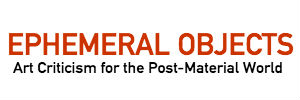So I’ve been talking to a lot of people – artists, programmers, philosophers – and trying to unpack this incredibly complex scenario. The previous post demonstrates how even the most basic terminology is fraught with indeterminacy and differences of opinion. It is just really difficult to pin some things down. But I wanted to map out the territory a little, break it down into some approachable chunks. This is a video (not a very good one, admittedly) that attempts to illustrate the ideas I’ve been working with and outline some areas of inquiry.
Comments are closed.

Just a small point on the metaphysics: you can make life easier by liberating the concept of “object” from “thing-like” beings. For if you want to be able to include performances, feelings, experiences, etc as also objects, you might think of “object” as simply what is referred to by a “single term” (a name or phrase that purports to pick out an individual– of ANY type). It would be a “thin” sense of object in which anything could serve as object. (“Everything” doesn’t mean “every THING”.) I think this will also help with the connection with OOP,, as their understanding of object is much more abstract than “thing-like” beings. Even classes or sets or processes, etc. should be able to count as objects, if I’ve understood what you’re chasing.
I am sort of confused by this….what is the end goal of trying to apply the word “object” to traditionally non-objective things? Are you just trying to completely erode the word so that it becomes meaningless, and if that’s the goal, what’s the idea behind it? To highlight that it is ultimately a subjective term, like chemical or natural or artificial or good or bad? As someone who is interested in the life of objects and of ephemera, I am sort of lost. Couldn’t you also go the opposite direction and just apply this contrarian logic to the most concrete bric-a-brac there is — a vase, say — and say that it is a performance? Sorry to appear dense.